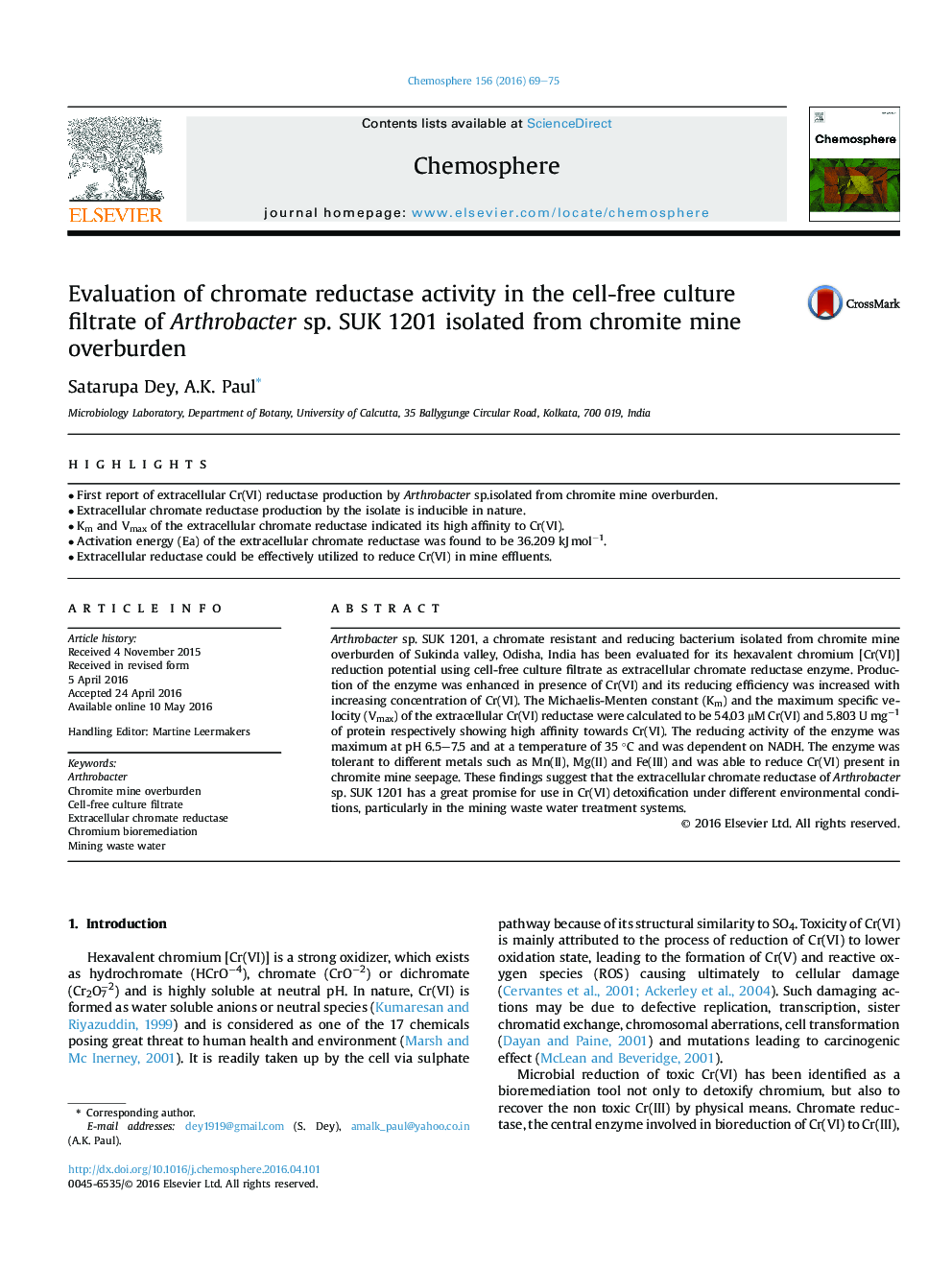| کد مقاله | کد نشریه | سال انتشار | مقاله انگلیسی | نسخه تمام متن |
|---|---|---|---|---|
| 4407718 | 1618815 | 2016 | 7 صفحه PDF | دانلود رایگان |

• First report of extracellular Cr(VI) reductase production by Arthrobacter sp.isolated from chromite mine overburden.
• Extracellular chromate reductase production by the isolate is inducible in nature.
• Km and Vmax of the extracellular chromate reductase indicated its high affinity to Cr(VI).
• Activation energy (Ea) of the extracellular chromate reductase was found to be 36.209 kJ mol−1.
• Extracellular reductase could be effectively utilized to reduce Cr(VI) in mine effluents.
Arthrobacter sp. SUK 1201, a chromate resistant and reducing bacterium isolated from chromite mine overburden of Sukinda valley, Odisha, India has been evaluated for its hexavalent chromium [Cr(VI)] reduction potential using cell-free culture filtrate as extracellular chromate reductase enzyme. Production of the enzyme was enhanced in presence of Cr(VI) and its reducing efficiency was increased with increasing concentration of Cr(VI). The Michaelis-Menten constant (Km) and the maximum specific velocity (Vmax) of the extracellular Cr(VI) reductase were calculated to be 54.03 μM Cr(VI) and 5.803 U mg−1 of protein respectively showing high affinity towards Cr(VI). The reducing activity of the enzyme was maximum at pH 6.5–7.5 and at a temperature of 35 °C and was dependent on NADH. The enzyme was tolerant to different metals such as Mn(II), Mg(II) and Fe(III) and was able to reduce Cr(VI) present in chromite mine seepage. These findings suggest that the extracellular chromate reductase of Arthrobacter sp. SUK 1201 has a great promise for use in Cr(VI) detoxification under different environmental conditions, particularly in the mining waste water treatment systems.
Journal: Chemosphere - Volume 156, August 2016, Pages 69–75